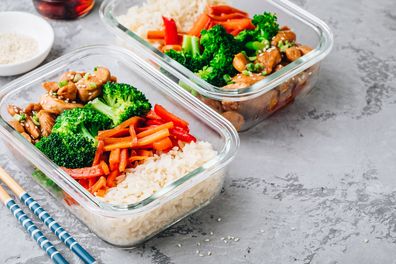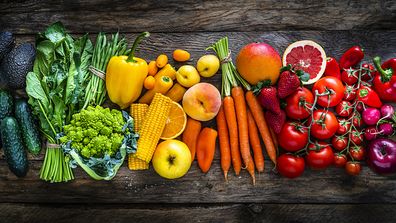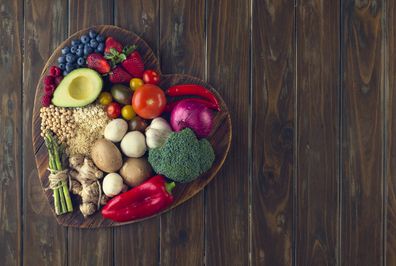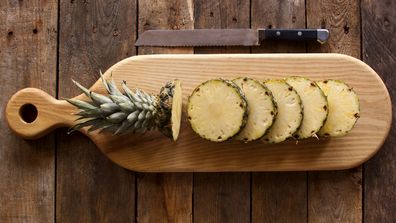It can sometimes be overwhelming when you’re planning your weekly meals and you can’t quite figure out how to ensure you’re giving yourself the right vitamins and other nutrients.
From ever-changing diet hacks on TikTok to the next super-food or trending diet on Instagram, healthy has become overwhelming and confusing.
Our diet choices should not be a one-size fits all approach.

READ MORE: Doctor reveals why you should never delay your bedtime
Each individual needs to consider several factors such as their likes and dislikes, lifestyle choices, cultural background and nutritional needs to arrive at an optimal, personalised diet.
The main thing to remember is there is not one healthy diet, there are many.
A lot of people might wonder, what are the building blocks to success when it comes to a healthy diet?
Firstly, my advice is instead of choosing pre-packaged “healthy” options, which are often ultra-processed foods claiming to be healthy, make the foundation of your diet whole, minimally processed foods such as fruit and vegetables, wholegrains, legumes, nuts, seeds, eggs, lean meat, and fish (and other seafood) into your diet.
While health food aisles teem with organic, sugar-free, or low-calorie marketing claims, the best and safest option is always to opt for fresh whole foods.
The foundation of our diets should be more whole, real foods and less of the packaged alternatives for better overall health.

The best way to achieve this is by doing more cooking and food prep at home, simply basing meals around nutrient dense, whole foods and start with the basics.
READ MORE: So you ate ‘too much’ during the silly season. Now what?
Fill half your plate with veggies at most meals, add a protein-rich food to fill a quarter of the plate – think lean meat, seafood, eggs, dairy, beans or tofu – fill the last quarter of the plate with what I call a ‘smart carb,’ so this means wholegrains or legumes, and lastly be sure to include a good fat such as extra virgin olive oil, nuts, seeds or avocado to balance up the meal with fat-soluble nutrients and antioxidants.
It’s well known that we should eat at least five vegetables a day, yet many of us don’t. We really do benefit from ‘eating the rainbow’.
That means including fruits and veg of all different colours.

The colour usually comes from the antioxidant present and so by eating purple, blue, red, brown, green, yellow, orange and every colour in between, you get a wonderful diversity of different antioxidants.
Fortunately, most of the recommended whole foods are versatile and affordable.
Eggs for instance, make a great nutrient boost for any meal, helping you stay fuller for longer. Eggs are mother nature’s original superfood, packed with 13 essential vitamins and minerals, including 12.7 grams of protein per serve of 2 eggs. Protein should be included in each of your three meals a day as this helps with appetite control and body composition, ensuring you maintain or build muscle mass.
Second, make sure you’re eating regular meals and portions for you.
There is no rule that says how many meals you need to eat, but at least two meals, if not three, suits most people. Snacks may be necessary if you have a smaller appetite and can’t eat too much in one sitting, or you have large energy needs. Just be sure to snack only when actually hungry and not too close to a meal so you don’t spoil your appetite for a more balanced meal.
And be sure to base your snacks on whole foods where possible. Fruit, yoghurt and/or nuts are hard to beat.
READ MORE: Meghan and Kate ‘didn’t get on’ from the beginning, Prince Harry says in TV interview
Ensure you aren’t skipping whole meals and depriving your body of the energy and vitamins it needs to continue with your day. Food is fuel, and it’s important to fill your body with what it needs! Skip too many meals and it makes it virtually impossible to get all the nutrients your body needs for optimum health.
And third – have a healthy relationship with food.
A healthy relationship with food is the key to a healthy diet. This doesn’t mean you can’t have any of the foods you once loved, they just need to be in moderation and combined with the healthy, fresh foods you need.

Understandably for some people it may be difficult to know where to start.
Health professionals like dietitians and your GP are here to help you with eating a healthy, balanced diet.
And although there can be a lot of misinformation out there, websites such as australianeggs.com.au are a great place to start when looking for recipe inspiration and ways to incorporate healthy foods into tasty meals.
For a daily dose of 9Honey, subscribe to our newsletter here

